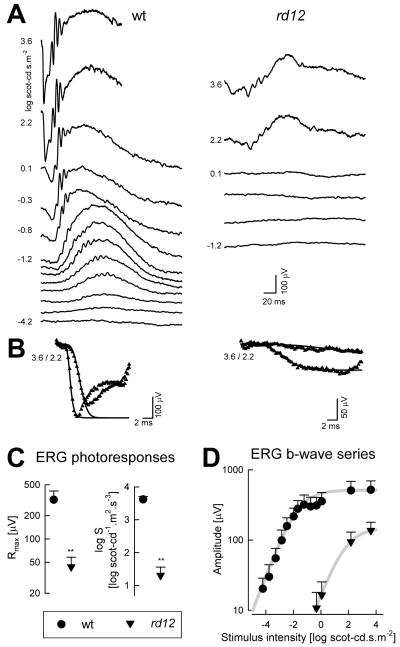Figure 4.
Retinal function in the Rpe65rd12 mouse model of RPE65-LCA. (A) Dark adapted ERGs evoked by increasing stimulus intensities (shown to the left of key traces) for representative 2-month-old wt and Rpe65rd12 mice. Blue flashes were used for all intensities except the highest, which were evoked by white flashes. Traces start at stimulus onset. (B) A physiologically based model of phototransduction (smooth lines) is fit as an ensemble to the leading edges of ERG photoresponses (symbols) evoked by 3.6 and 2.2 log scot-cd.s.m−2 flashes. The response from the mutant shows reduced amplitude and a slower initial slope. (C) Summary statistics of maximum amplitude (Rmax) and sensitivity (log S) parameters obtained from photoresponse modeling in Rpe65rd12 mice are significantly (**) different than wt. (D) Luminance-response functions derived from ERG b-wave series show diminished light sensitivity in mutant animals indicated by a shift to the right of the curves. Mutant animals also show a reduction in maximum amplitude. Error bars are 1SD. Reprinted from Roman et al., 2007b, copyright © by Molecular Vision.

